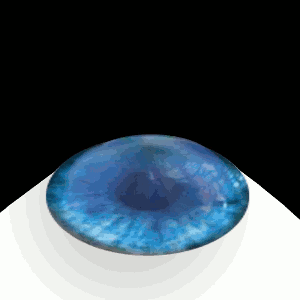|
Ioannis Pallikaris
Ioannis G. Pallikaris ( el, Παλλήκαρης Ιωάννης; born November 18, 1947) is a Greek ophthalmologist who in 1989 performed the first LASIK procedure on a human eye. Pallikaris also developed Epi-LASIK. Professor Palikaris was the rector of the University of Crete between 2003 and 2011. He is also the founder and director of the Institute of Vision and Optics in the same university. Professor Pallikaris serves as the Medical Advisory Board Chair for Presbia, an ophthalmic device company, where he is responsible for overseeing the post-market surveillance trials of the Flexivue Microlens, a corneal inlay treatment for presbyopia Presbyopia is physiological insufficiency of accommodation associated with the aging of the eye that results in progressively worsening ability to focus clearly on close objects. Also known as age-related farsightedness (or age-related long si ..., the age-related loss of near vision. He also conducts training sessions for surgeon ... [...More Info...] [...Related Items...] OR: [Wikipedia] [Google] [Baidu] |
Ophthalmologist
Ophthalmology ( ) is a surgical subspecialty within medicine that deals with the diagnosis and treatment of eye disorders. An ophthalmologist is a physician who undergoes subspecialty training in medical and surgical eye care. Following a medical degree, a doctor specialising in ophthalmology must pursue additional postgraduate residency training specific to that field. This may include a one-year integrated internship that involves more general medical training in other fields such as internal medicine or general surgery. Following residency, additional specialty training (or fellowship) may be sought in a particular aspect of eye pathology. Ophthalmologists prescribe medications to treat eye diseases, implement laser therapy, and perform surgery when needed. Ophthalmologists provide both primary and specialty eye care - medical and surgical. Most ophthalmologists participate in academic research on eye diseases at some point in their training and many include research as p ... [...More Info...] [...Related Items...] OR: [Wikipedia] [Google] [Baidu] |
LASIK
LASIK or Lasik (''laser-assisted in situ keratomileusis''), commonly referred to as laser eye surgery or laser vision correction, is a type of refractive surgery for the correction of myopia, hyperopia, and an actual cure for astigmatism, since it is in the cornea. LASIK surgery is performed by an ophthalmologist who uses a laser or microkeratome to reshape the eye's cornea in order to improve visual acuity. For most people, LASIK provides a long-lasting alternative to eyeglasses or contact lenses. LASIK is very similar to another surgical corrective procedure, photorefractive keratectomy (PRK), and LASEK. All represent advances over radial keratotomy in the surgical treatment of refractive errors of vision. For patients with moderate to high myopia or thin corneas which cannot be treated with LASIK and PRK, the phakic intraocular lens is an alternative. As of 2018, roughly 9.5 million Americans have had LASIK and, globally, between 1991 and 2016, more than 40 million proced ... [...More Info...] [...Related Items...] OR: [Wikipedia] [Google] [Baidu] |
Human Eye
The human eye is a sensory organ, part of the sensory nervous system, that reacts to visible light and allows humans to use visual information for various purposes including seeing things, keeping balance, and maintaining circadian rhythm. The eye can be considered as a living optical device. It is approximately spherical in shape, with its outer layers, such as the outermost, white part of the eye (the sclera) and one of its inner layers (the pigmented choroid) keeping the eye essentially light tight except on the eye's optic axis. In order, along the optic axis, the optical components consist of a first lens (the cornea—the clear part of the eye) that accomplishes most of the focussing of light from the outside world; then an aperture (the pupil) in a diaphragm (the iris—the coloured part of the eye) that controls the amount of light entering the interior of the eye; then another lens (the crystalline lens) that accomplishes the remaining focussing of light i ... [...More Info...] [...Related Items...] OR: [Wikipedia] [Google] [Baidu] |
Epi-LASIK
Epi-LASIK is a refractive surgery technique designed to reduce a person's dependency on eyeglasses and contact lenses. Invented by Dr. Ioannis Pallikaris, the technique is basically an automatic LASEK without alcohol; it can be better considered as superficial LASIK. The stromal bed is smoother than that obtained by mechanical methods or brush. Unlike alcohol (LASEK), there is no chance of damaging the limbal stem cells. It is also relatively less painful than LASEK. # A device similar to a microkeratome (called epi-keratome) slides over the surface of the cornea, just underneath the epithelial layer of cells while suction is applied. # The result is a hinged sheet of epithelium that is at least partially viable. # It is reflected out of the way so that the ablation can take place. # The sheet is repositioned and a bandage soft contact lens is placed on the eye. Recent studies show that the surface epithelial layer of the cornea heals faster if the epithelial sheet is removed at ... [...More Info...] [...Related Items...] OR: [Wikipedia] [Google] [Baidu] |
University Of Crete
The University of Crete (UoC; Greek: Πανεπιστήμιο Κρήτης) is a multi-disciplinary, research-oriented institution in Crete, Greece, located in the cities of Rethymno (official seat) and Heraklion, and one of the country's most academically acclaimed and reputable universities."''Overall, the external evaluation committee was impressed by the commitment to excellence permeating all levels of the institution. For a relatively new university, UoC has made remarkable achievements in the Greek academic world and beyond.''" There are 16 main undergraduate degree programmes corresponding to the university's departments and more than 30 master's programmes. As of 2017, there is a student population of 16.000 registered undergraduates and 2.500 registered postgraduates, more than 500 Faculty members as well as approximately 420 administrative staff. The university ranked 62nd in The Times Higher Education (THE) 2018 list of the top universities aged 50 years or under. Ov ... [...More Info...] [...Related Items...] OR: [Wikipedia] [Google] [Baidu] |
Flexivue Microlens
Presbyopia is physiological insufficiency of accommodation associated with the aging of the eye that results in progressively worsening ability to focus clearly on close objects. Also known as age-related farsightedness (or age-related long sight in the UK), it affects many adults over the age of 40. A common sign of presbyopia is difficulty reading small print which results in having to hold reading material farther away. Other symptoms associated can be headaches and eyestrain. Different people will have different degrees of problems. Other types of refractive errors may exist at the same time as presbyopia. This condition is similar to hypermetropia or far-sightedness which starts in childhood and exhibits similar symptoms of blur in the vision for close objects. Presbyopia is a typical part of the aging process. It occurs due to age related changes in the lens (decreased elasticity and increased hardness) and ciliary muscle (decreased strength and ability to move the le ... [...More Info...] [...Related Items...] OR: [Wikipedia] [Google] [Baidu] |
Corneal Inlay
A corneal inlay (also called an intracorneal implant) is a device which is surgically implanted in the cornea of the eye as a treatment for presbyopia. Successful installation results in reducing dependence on reading glasses, so that the user can more easily engage in everyday tasks such as using a mobile phone, reading store shelf prices and working on a computer. Corneal inlays are small, thin, and permeable. Typically one is implanted in the non-dominant eye. Jose Barraquer created the first corneal inlay prototype in 1949 in Barcelona, Spain. The flint glass material which he used, however, was found to be unsuitable because of biocompatibility issues.Whitman, Jeffrey"Corneal inlays provide safe, reversible option for presbyopia treatment."''Ocular Surgery News U.S. Edition'' 2012 Aug. Other transparent, permeable materials were tested, including hydrogel polymers in the 1960s. Some early corneal inlay recipients experienced complications, such as corneal opacification, thin ... [...More Info...] [...Related Items...] OR: [Wikipedia] [Google] [Baidu] |
Presbyopia
Presbyopia is physiological insufficiency of accommodation associated with the aging of the eye that results in progressively worsening ability to focus clearly on close objects. Also known as age-related farsightedness (or age-related long sight in the UK), it affects many adults over the age of 40. A common sign of presbyopia is difficulty reading small print which results in having to hold reading material farther away. Other symptoms associated can be headaches and eyestrain. Different people will have different degrees of problems. Other types of refractive errors may exist at the same time as presbyopia. This condition is similar to hypermetropia or far-sightedness which starts in childhood and exhibits similar symptoms of blur in the vision for close objects. Presbyopia is a typical part of the aging process. It occurs due to age related changes in the lens (decreased elasticity and increased hardness) and ciliary muscle (decreased strength and ability to move the l ... [...More Info...] [...Related Items...] OR: [Wikipedia] [Google] [Baidu] |
Greek Ophthalmologists
Greek may refer to: Greece Anything of, from, or related to Greece, a country in Southern Europe: *Greeks, an ethnic group. *Greek language, a branch of the Indo-European language family. **Proto-Greek language, the assumed last common ancestor of all known varieties of Greek. **Mycenaean Greek, most ancient attested form of the language (16th to 11th centuries BC). **Ancient Greek, forms of the language used c. 1000–330 BC. **Koine Greek, common form of Greek spoken and written during Classical antiquity. **Medieval Greek or Byzantine Language, language used between the Middle Ages and the Ottoman conquest of Constantinople. **Modern Greek, varieties spoken in the modern era (from 1453 AD). *Greek alphabet, script used to write the Greek language. *Greek Orthodox Church, several Churches of the Eastern Orthodox Church. *Ancient Greece, the ancient civilization before the end of Antiquity. *Old Greek, the language as spoken from Late Antiquity to around 1500 AD. Other uses * '' ... [...More Info...] [...Related Items...] OR: [Wikipedia] [Google] [Baidu] |
Living People
Related categories * :Year of birth missing (living people) / :Year of birth unknown * :Date of birth missing (living people) / :Date of birth unknown * :Place of birth missing (living people) / :Place of birth unknown * :Year of death missing / :Year of death unknown * :Date of death missing / :Date of death unknown * :Place of death missing / :Place of death unknown * :Missing middle or first names See also * :Dead people * :Template:L, which generates this category or death years, and birth year and sort keys. : {{DEFAULTSORT:Living people 21st-century people People by status ... [...More Info...] [...Related Items...] OR: [Wikipedia] [Google] [Baidu] |
21st-century Greek Physicians
The 1st century was the century spanning AD 1 ( I) through AD 100 ( C) according to the Julian calendar. It is often written as the or to distinguish it from the 1st century BC (or BCE) which preceded it. The 1st century is considered part of the Classical era, epoch, or historical period. The 1st century also saw the appearance of Christianity. During this period, Europe, North Africa and the Near East fell under increasing domination by the Roman Empire, which continued expanding, most notably conquering Britain under the emperor Claudius (AD 43). The reforms introduced by Augustus during his long reign stabilized the empire after the turmoil of the previous century's civil wars. Later in the century the Julio-Claudian dynasty, which had been founded by Augustus, came to an end with the suicide of Nero in AD 68. There followed the famous Year of Four Emperors, a brief period of civil war and instability, which was finally brought to an end by Vespasian, ninth Roman emperor ... [...More Info...] [...Related Items...] OR: [Wikipedia] [Google] [Baidu] |





